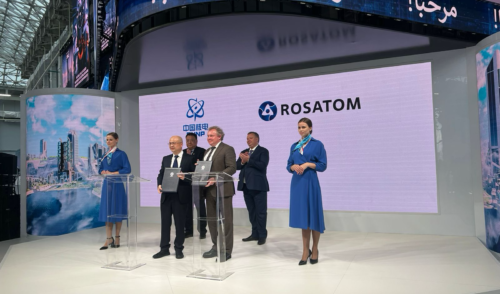
A fuel of contention
back to contentsAccording to Kirst, the problem roots in the failure by NAEC Energoatom to use properly Westinghouse’s fuel jointly with TVEL’s one, which led to deformations that caused some mishaps. Regretfully, Kirst says, the Russian fuel deflected to damage WE’s bundles. Not a single scratch of those on the US fuel poses real danger, he says. However, such events raise concerns as regards the attempts to use both fuels at the same time and their proper performance in the combination, he says.
On its part, TVEL refutes this information categorically, noting that basing on data of the State Nuclear Regulatory Inspectorate of Ukraine, an interagency commission investigated into the incident to unambiguously state “design deficiencies” of Westinghouse’s fuel being the cause of the damage.
“Earlier, through mass media, Westinghouse attempted for several times to cast the blame on the Ukrainian operator for its fuel incidents, stating low safety culture of NAEC Energoatom, and on SNRI of Ukraine allegedly for biased attitudes to Westinghouse, an official statement of TVEL says. “Now, Westinghouse attempts to accuse TVEL of its failures, by this questioning the professionalism and high competences of the Ukrainian interagency commission, SNRI of Ukraine, and NAEC Energoatom. Such behavior falls out of the business ethics and fair competition principles.”
TVEL hopes that after this statement the Ukrainian mass media, which published the Kirst’s interview, would cast back the untrue information. Otherwise, the company reserves the right to protect its business reputation using all means available.
In 2011-2012, Westinghouse’s fuel assemblies loaded in South Ukrainian plant’s reactors encountered problems. Their geometry deteriorated and they started to deflect. In 2012, the Ukrainian nuclear regulator banned further use of Westinghouse’s fuel.
Still earlier, in 2000 Ukraine’s Energoatom elected to diversify nuclear fuel supplies and started qualification process of Westinghouse fuel for its use in Ukraine. In March 2008, Energoatom and Westinghouse Electric Sweden AB (Sweden) signed a commercial contract for supplying fresh fuel to 3 up to 6 Ukraine’s VVER-1000 reactors. In April 2014 the parties agreed to extend this contract until 2020. So the first load of the Westinghouse’s improved fuel TVS-WR is planned to put in South Ukrainian-3 in December 2014 – January 2015.
The Russian Fuel Company of ROSATOM TVEL is the main nuclear fuel supplier for the Ukrainian nuclear power plants.
The FC TVEL said: “The Fuel Company and NAEC Energoatom continue successful interaction to secure nuclear fuel supplies to Ukraine’s plants. Over the time of the cooperation, not a single breach of supplies has taken place, with all contractual obligations being fulfilled in full scope and strictly on schedule. The Ukrainian customer has no any official claims in regard of the Russian nuclear fuel quality. According to the officially circulated information and media reports, the situation with Westinghouse’s fuel for VVER reactors looks far from being optimistic. Official reports say the Czech Republic’s Temelin nuclear power plant suffered performance mishaps and leaks of WE’s bundles for several years. Disregarding economic losses, the Czech operator removed at an earlier date all Westinghouse’s fuel assemblies and replaced them with FC TVEL’s fuel.




